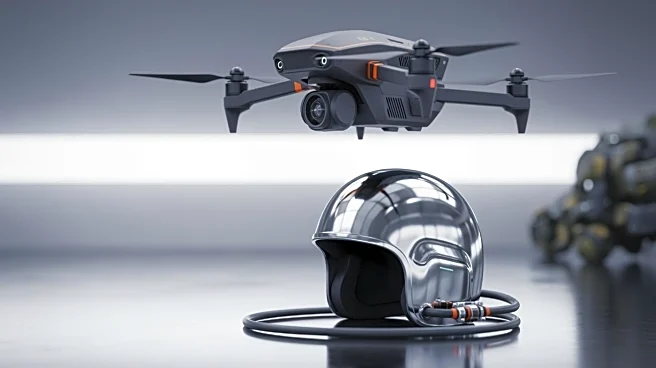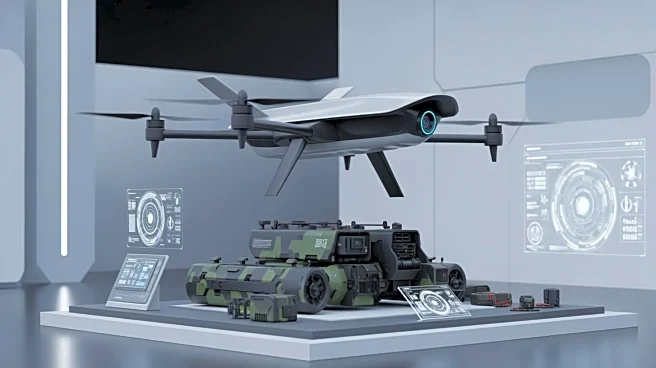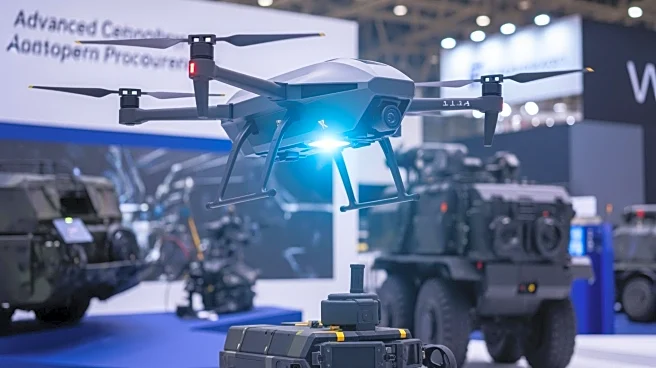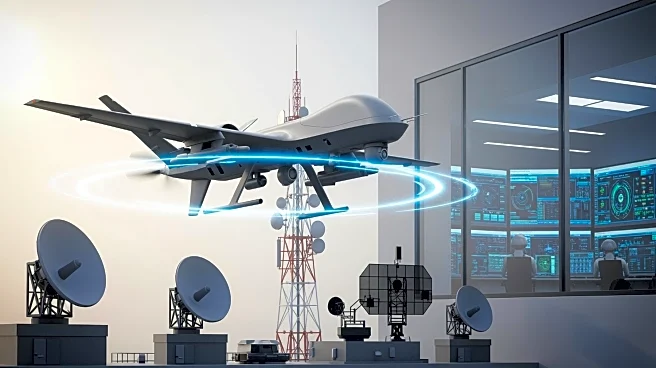What's Happening?
Anduril Industries has introduced its new EagleEye system, a mixed-reality technology designed to enhance soldiers' situational awareness through advanced helmet, visor, and glasses. This unveiling follows
a significant $159 million prototyping award received in September 2025, which accelerates the system's field testing and procurement. The EagleEye system operates on the Lattice platform, integrating live video, sensors, and teammate tracking into a heads-up display (HUD). This development marks a shift from software-focused solutions to field-ready hardware, potentially influencing the Army's procurement strategies. The launch coincides with the Army's reassessment of its Integrated Visual Augmentation System (IVAS) investments, suggesting a rapid transition from research and development to practical application.
Why It's Important?
The introduction of the EagleEye system represents a significant advancement in military technology, potentially transforming how soldiers engage in combat by reducing cognitive load and enhancing decision-making speed. This development could lead to faster acquisition timelines as the Army seeks to integrate these capabilities into existing command systems. The partnership with Meta and the substantial prototyping award highlight the growing intersection between commercial technology and defense needs. However, the system's deployment raises ethical and privacy concerns, as well as questions about data security and rules of engagement. The outcome of this initiative could set new standards for military procurement and influence future defense technology investments.
What's Next?
As the EagleEye system moves from prototype to field testing, the Army and other stakeholders will need to evaluate its integration with current systems and its impact on operational effectiveness. The rapid development and deployment of such technologies may prompt regulatory bodies to establish new standards for helmeted AI and data sharing. Additionally, the system's success could influence future defense contracts and partnerships, potentially reshaping the military technology landscape. Observers will be watching closely to see how Congress and procurement officers respond to this technological shift and whether it leads to broader adoption across military branches.
Beyond the Headlines
The EagleEye system's introduction could have long-term implications for military ethics and international arms agreements. As mixed-reality technologies become more prevalent in defense, there may be increased scrutiny on their use in combat and the potential for escalation in conflicts. The collaboration between Anduril and Meta also underscores the growing role of private tech companies in national defense, raising questions about the balance between commercial interests and military needs. This development may also influence global military strategies as other nations seek to adopt similar technologies.











